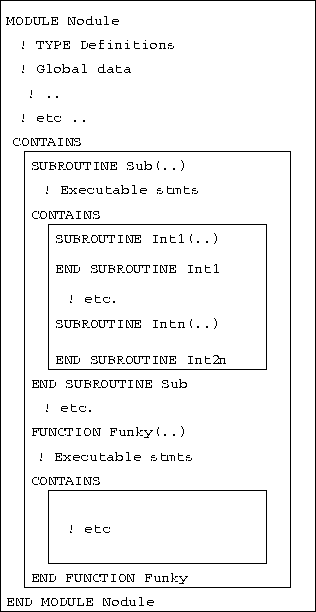![]() declarations and specifications statements
declarations and specifications statements ![]()
[ CONTAINS
![]() definitions of module procedures
definitions of module procedures ![]() ]
]
END [ MODULE [ ![]() module name
module name ![]() ] ]
] ]
The syntax of a module program unit is:
MODULEmodule name

declarations and specifications statements

[ CONTAINS
definitions of module procedures
]
END [ MODULE [
module name
] ]
![]() module name
module name ![]() is the name that appears in the USE statement,
it is not necessarily the same as the filename.
is the name that appears in the USE statement,
it is not necessarily the same as the filename.

Figure 9: Schematic Diagram of a Module Program Unit
Entities of other modules can be accessed by a USE statement as the first statement in the specification part. This is called use-association.
Non-circular dependent definition chains are allowed (one module USE s another which USE s another and so on) providing a partial-inheritance mechanism.
A module may include the following declarations and specifications: